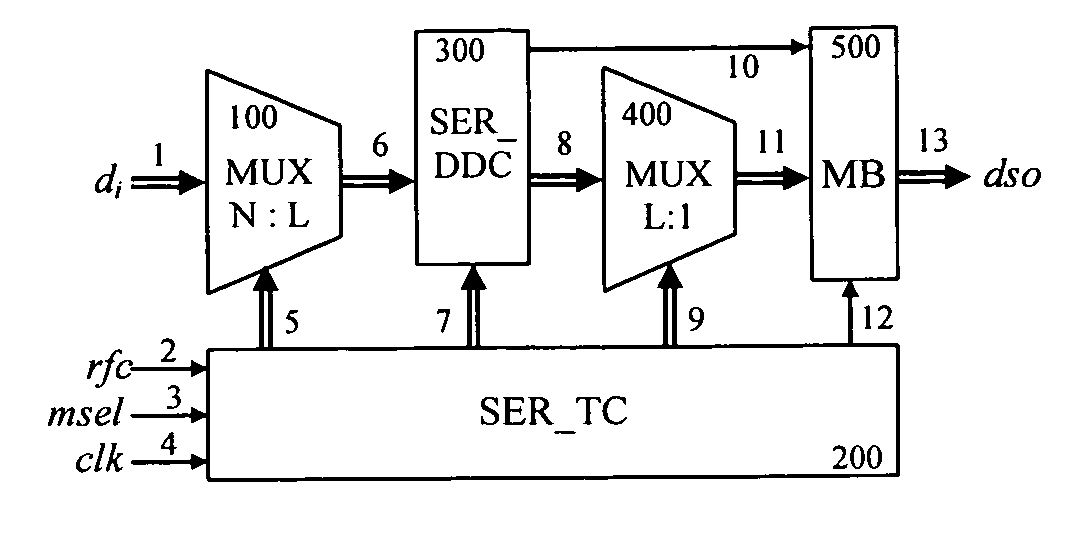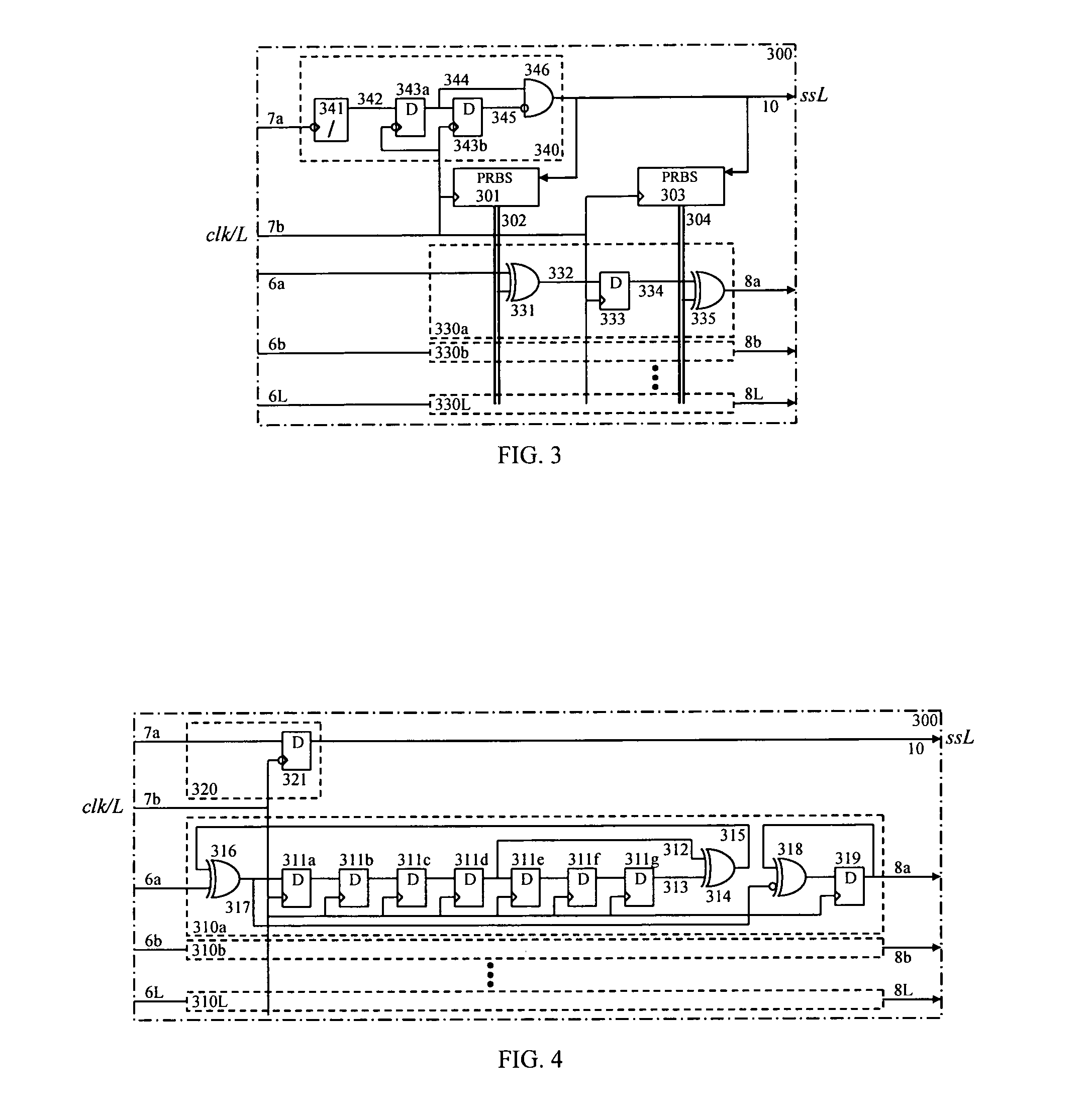Method and system for multilevel serializer/deserializer
- Summary
- Abstract
- Description
- Claims
- Application Information
AI Technical Summary
Benefits of technology
Problems solved by technology
Method used
Image
Examples
Embodiment Construction
[0030]FIG. 1 is a block diagram and FIG. 5 is a timing diagram for a serializer in accordance with an exemplary embodiment of the present invention. Referring now to FIG. 1, input parallel low speed data words di 1 are applied to the input of MUX N:L 100. MUX N:L converts the N-bit wide parallel words di with rate B into L-bit wide parallel data words 6 with rate NB / L (e.g. 2B, 4B, etc.) under control of timing signals 5 generated by SER_TC block 200. Data words 6 are encoded by SER_DDC block 300 in order to achieve a near-equal probability of logic “1” and logic “0” values in the output data stream dso 13. SER_DDC 300 also generates L-bit long synchronization pulses ssL 10 to indicate desired positions of marking pulses in the out-going serial data 13.
[0031]All operations performed by SER_DDC 300 are controlled by timing signals 7 generated by SER_TC 200. The encoded data words 8 from SER_DDC 300 are further multiplexed into a serial data stream 11 by MUX L:1 400 under control of t...
PUM
 Login to View More
Login to View More Abstract
Description
Claims
Application Information
 Login to View More
Login to View More - R&D
- Intellectual Property
- Life Sciences
- Materials
- Tech Scout
- Unparalleled Data Quality
- Higher Quality Content
- 60% Fewer Hallucinations
Browse by: Latest US Patents, China's latest patents, Technical Efficacy Thesaurus, Application Domain, Technology Topic, Popular Technical Reports.
© 2025 PatSnap. All rights reserved.Legal|Privacy policy|Modern Slavery Act Transparency Statement|Sitemap|About US| Contact US: help@patsnap.com



